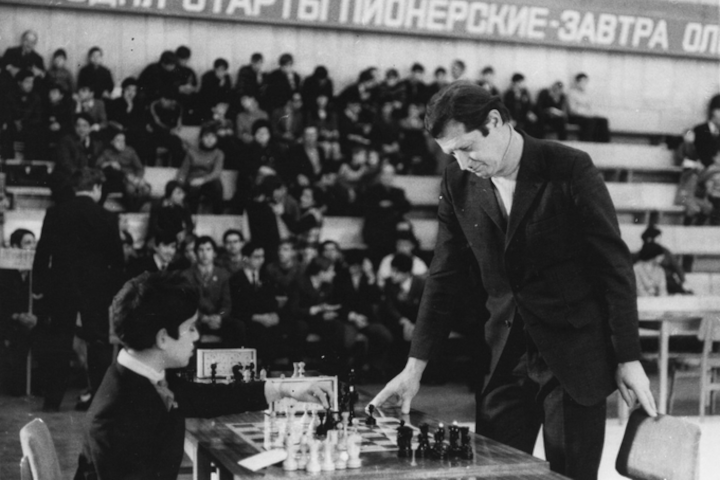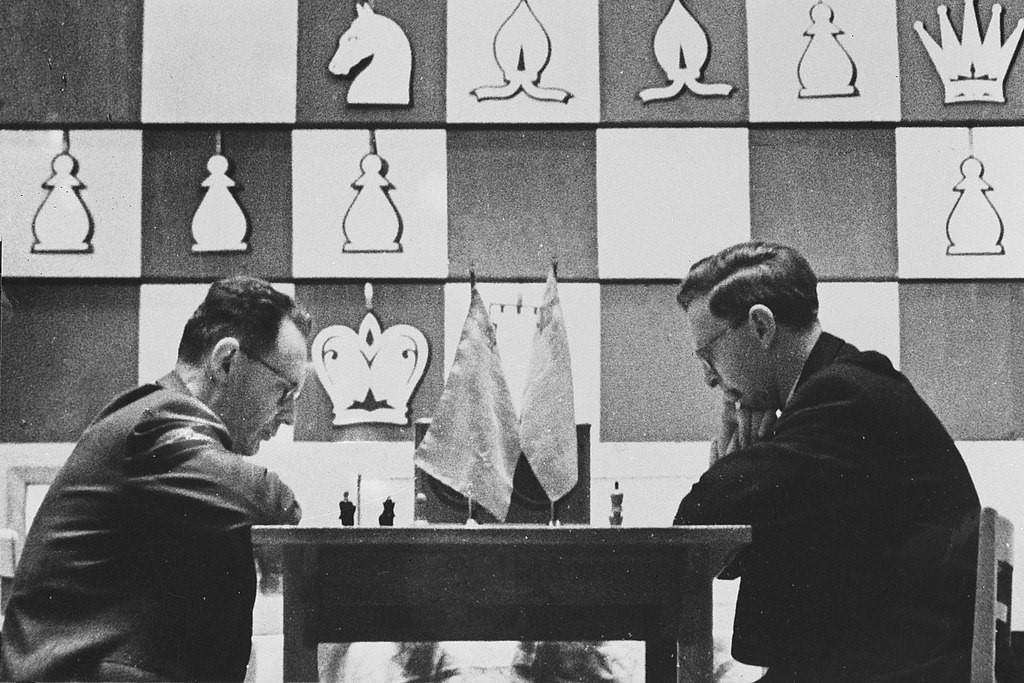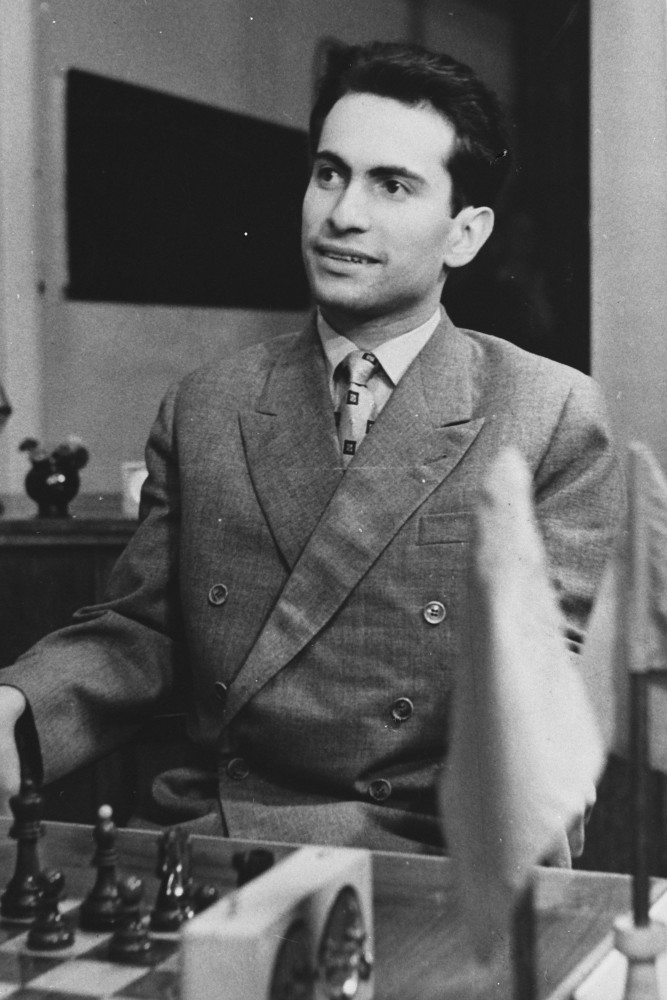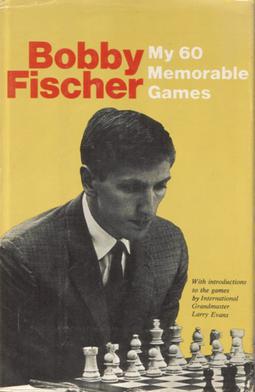


ChessBase 17 - Mega package - Edition 2024
It is the program of choice for anyone who loves the game and wants to know more about it. Start your personal success story with ChessBase and enjoy the game even more.
Previous instalments: Part 1 | Part 2 | Part 3
After the 1958 Interzonal, Averbakh’s sporting career drew to a close. However, he did not have to seek employment. As it turned out, his services as a trainer were in demand. It had begun way back in the 1950s when Botvinnik had asked him to be his second for world championship matches. Botvinnik’s rival was Smyslov, formidable in all phases of the game and importantly, a virtuoso in endings. Averbakh was also known for his prowess in the endgame and his writing on its theory. Smyslov was 15 years younger as compared to Botvinnik and it made sense for the world champion to practise with a relatively young trainer. During the period 1955-1957 Averbakh was to play a series of training games with Botvinnik. While the general score was in the world champion’s favour, the games gave him much-needed practice in match play.
The playing conditions in the early days were unusual. Botvinnik had a radio right under the table going full blast announcing news of factories and fields. He wanted to get himself accustomed to any noise emanating from the spectators in the hall or from outside.
Averbakh writes:
This was a man who was capable of like no other of self-programming. If the noise in the playing hall started to bother him, he would say to himself, “But I trained especially for such conditions, therefore, the noise should not bother me!”
Averbakh and Botvinnik played a short match just before the 1957 World Championship Match. Here is one of the games:
A tough battle in all its phases!
Master Class Vol.14 - Vasily Smyslov
Smyslov cultivated a clear positional style and even in sharp tactical positions often relied more on his intuition than on concrete calculation of variations. Let our authors introduce you into the world of Vasily Smyslov.
In the book he writes:
We fought unusually hard for a training match. Several games ended in extreme time-trouble, which often resulted in serious blunders… these battles may have cost Botvinnik too much strength and nervous energy. I cannot rule out the possibility that when he sat down at the board a month later with Smyslov Botvinnik had not fully recovered, and that this somehow influenced the course of the match.
Not really! Averbakh is modest about his contribution to Botvinnik’s match preparation and goes too far with this self-deprecatory comment. Botvinnik would have lost the 1957 Match anyway, as Smyslov was well-prepared and played better. Admittedly, he, the younger player, had more energy and stamina to endure the stress and strain of this match.
Averbakh was not involved in Botvinnik’s preparation for the Return Match in 1958. Next year he received an offer from Koblenz to work as Tal’s second for the Candidates’ Tournament.
He writes:
Although I had no obligations to Botvinnik, I decided to advise him of the matter, just to ensure a clear conscience. He listened to me, but said nothing. I took his silence as a sign of agreement, and immediately sent a telegram to Riga, saying that I accepted the offer. How little I knew Botvinnik! He took my actions as a betrayal and never asked me to play training games with him again.
Surely, Botvinnik should not have seen it as betrayal, as he had not even availed of Averbakh’s services as a second for the 1958 Return Match. However, he was right in not having Averbakh as his sparring partner. As Tal was a potential rival for the crown, there was no way in which Averbakh would have trained both the world champion and the candidate.

Mikhail Botvinnik facing Vasily Smyslov | Photo: Dutch National Archive
Averbakh had an easy wavelength with Tal and did not interfere with his ward’s way of preparation, and still saw to it that he was helped in every possible way:
In the spring of 1959 I went to Riga, to begin preparing Tal for the Candidates’ Tournament. His manner of analysing was unique. Whereas Botvinnik, in the first instance, tried to find the most expedient plan, the most rational arrangement of his forces, the Rigan looked instead for the most aggressive plan, leading to sharp play, rich with combinational possibilities. Whereas Botvinnik sought the rule, Tal sought the exception.
The Candidates’ Tournament was due to take place that autumn. When there were only a few days to go before we were to leave, the news came from Riga that Tal had appendicitis , and had undergone an operation to remove his appendix. Seeing him in Moscow, I was horrified - he was pale, and noticeably haggard. Only his eyes were the same, piercing and burning like fire. Koblents had been delayed in getting his travel documents, so Misha and I went to Yugoslavia together. He had still not recovered fully from the operation, and I had to carry his suitcase for him. We had to develop our tactics at the start of the tournament, to suit his state of health. I suggested that in the first cycle (there were four in all), Tal should try to avoid adjournments. Even if he only scored 50%, that would be fine. The important thing was to conserve his strength fully at first.
Master Class Vol.2: Mihail Tal
On this DVD Dorian Rogozenco, Mihail Marin, Oliver Reeh and Karsten Müller present the 8. World Chess Champion in video lessons: his openings, his understanding of chess strategy, his artful endgame play, and finally his immortal combinations.
 As it happened, Averbakh’s judgment turned out to be right. Tal’s health improved and after two cycles he was only half a point behind the leader, Keres. How he prevailed over the veteran in the rest of the Tournament is history.
As it happened, Averbakh’s judgment turned out to be right. Tal’s health improved and after two cycles he was only half a point behind the leader, Keres. How he prevailed over the veteran in the rest of the Tournament is history.
But it was far from easy. In the last cycle, Misha was leading the event and was ahead of Keres by 2½ points. But he still had to face the Estonian, who was determined to play for a win and retain at least theoretical chances of gaining first place. So both Koblents and Averbakh advised Tal to play quietly for a draw. Tal, however, was outplayed by Keres and lost only after a valiant in the session after adjournment.
In the book Averbakh regrets that he and Koblenz gave Misha the wrong advice. Instead they should have let him follow his own instinct and play as he chose. But on that day Tal himself was in two minds about how he should play. On the one hand, he realized that he only had to draw with Keres and would win the Candidates’ as no one else would be able to catch up with him in the remaining rounds. On the other hand, he wanted to even the score with the Estonian in their personal match, 2-2.
 He told Koblenz:
He told Koblenz:
Keres has two and a half fewer points, and I have no moral right to avoid a fight.
First, he played aggressively, but then saw that something was wrong with his position. So changing his mind he played for a draw. Sensing the indecision, the great Estonian pressed for a win and the game was adjourned in a difficult position for Tal. In the book Averbakh does not mention what they did about the analysis of this position. Probably they concluded, the game was lost and it was left to Tal to make a last-minute rally on resumption of the session.
Keres, however, found, the position was a minefield and discovered some amazing possibilities. Here is one of them.
Now Tal had only a slender lead, and the rest of the cycle was not without adventures. In the penultimate round he faced young Fischer. He had had some fun teasing Bobby.
Tal pushes the pawn only one square, holding it on c6 pretending to play the Cao-Kann. Then he smiles and pushes it to c5. It would be a Sicilian after all.
But this time the game was a dangerous affair. Bobby had lost to Misha thrice before and was determined to beat him this time.
On the morning of the game, Tal prepared with Averbakh, Koblenz and Tigran Petrosian who had called in. They all knew what to expect from young Bobby. He would take a principled position and play 6.Bc4 against the Najdorf Sicilian. So they analysed the same line further and here 9…Nxe4 appealed to Tigran. “Such a nice little central pawn… I think, I would take it”. But Misha had his doubts, and it was only after sitting down at the board and glancing at Fischer, that he waved his hands, “Ah, what the devil — I take it!”
Now the American prodigy, all fired up, played “just like Tal”, first sacrificing a pawn and then both his knights & a rook for an attack. If he lost, Keres would catch up with him for first place in the tournament. Averbakh could not bring himself to watch the ensuing debacle and walked out of the hall. Koblenz and Mikenas, Keres’ second remained in the hall, tense, with sedative tablets in their mouths.
Subsequently Koblenz recalled, earlier during the games, he used to make regular phone calls to relay the moves to his colleagues in Riga, who would then display the moves on large demonstration boards so that the local chess fans could follow the progress of their national hero. During this game with Fischer, however, he stopped calling as he did not want to cause “a collective heart attack”!
Sadly, Bobby lost his way in complications and managed to lose the game. He was to include this encounter in his book, My 60 Memorable Games.

Cover of the 1969 Simon and Schuster edition of “My 60 Memorable Games”
Years later Tal recalled a famous moment from the game:
Master Class Vol.10: Mikhail Botvinnik
Our experts show, using the games of Botvinnik, how to employ specific openings successfully, which model strategies are present in specific structures, how to find tactical solutions and rules for how to bring endings to a successful conclusion
It was here that a widely-known psychological duel took place between us. Every player has his own habit: one will first make his move and then write it down, while another will do things the other way round. In our game Fischer first wrote down the move 22.Rae1!, without doubt the strongest, and wrote it, not in his usual English notation, but in European, almost Russian! Then he not very deftly pushed the scoresheet towards me. ‘He’s asking for an endorsement’, I thought to myself, but how was I to react? To frown was impossible, if I smiled he would suspect ‘trickery’, and so I did the natural thing. I got up and began to calmly walk up and down the stage. I met Petrosian, made some joke to him, and he replied. The 15-year-old Fischer, who was essentially still only a large child, sat with a confused expression on his face, looking first at the front row of the spectators where his second was sitting, and then at me. Then he wrote down another move: 22.Qc6+? and after 22…Rd7 23.Rae1+ Be7 24.Rxf7 Kxf7 25.Qe6+ Kf8! 26. Qxd7 Qd6 I held on to my extra piece and adjourned the game in a won position. When I later asked Fischer why he hadn’t played 22.Rae1, he replied, “Well, you laughed when I wrote it down!”
Some in the Soviet establishment gloated over Tal’s victory in this game. Vasily Panov, with typical iron curtain “objectivity”, commented in the Soviet tournament bulletin, “Almost all game Fischer played in Tal style. But all his trouble was in vain because Tal did not defend in Fischer style — instead he found the one and only one saving counterchance!”
It was an unwise comment to make. Two years later Bobby beat Misha at the 1961 Bled Tournament. Tal himself was to acknowledge the genius of Fischer in the ensuing years.
Averbakh sums up his portrait of Tal with fine words, “He burnt the candle at both ends.”
.jpg)
1) One limitation of this book is that there are no games in it. From this point of view, his other work, Averbakh’s Selected Games (Cadogan, 1998), deserves mention. However, I have found Big DataBase also useful, as it has many of the games mentioned by Averbakh in this book.
2) Averbakh offers two of his games from the training match with Botvinnik in his book, Averbakh’s Selected Games. The former world champion also annotated two of the games from this match and they may be found in Botvinnik’s Best Games Vol.3 (1957-1970).
3) The picture of Keres here first appeared in the book of the 1959 Candidates’ Tournament, Turnir pretendentov 1959 by Gligorić & Ragozin. Here it is reproduced from Douglas Griffin’s Twitter Page (now named X) on Soviet Chess History: https://twitter.com/dgriffinchess
4) The picture of Tal appeared in his blog on Soviet Chess History, which has a section on the 1959 Candidates’ Tournament: https://dgriffinchess.wordpress.com/
5) Keres analysed his game with Tal in great detail, and it may be found the book, Paul Keres, The Quest for Perfection by Paul Keres and John Nunn (B.T. Batsford 1997)
6) The Fischer-Tal 1959 encounter is also analysed in detail in Mikhail Tal’s Best Games of Chess Vol. 1 The Magic of Youth by Tibor Karolyi.
7) A Trbute to the Life and Work of Averbakh: https://dgriffinchess.wordpress.com/2022/02/06/yuri-averbakh/
8)Another tribute to Averbakh (Russian) with rare images from his life and career: https://www.youtube.com/watch?v=rNxFnDqJ0s
Links
| Advertising |